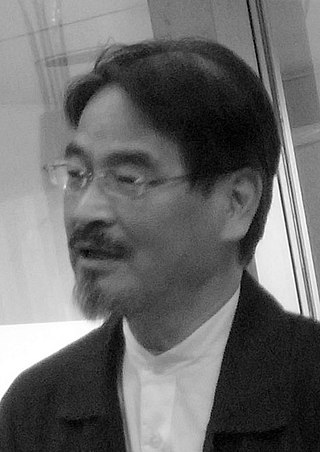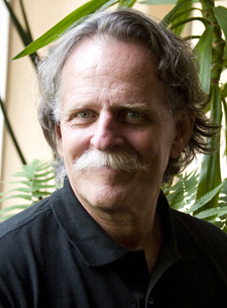
Taku Aramasa [1] (新正 卓, Aramasa Taku, born 15 August 1936) is a Japanese photographer.

Taku Aramasa [1] (新正 卓, Aramasa Taku, born 15 August 1936) is a Japanese photographer.
Born in Tokyo, Aramasa moved with his family to Manchukuo in 1940. In 1948 he moved to Sakata, Yamagata. He graduated from Musashino Art School (武蔵野美術学校, Musashino Bijutsu Gakkō) (now Musashino Art University) in 1960.
After graduating art school, Aramasa set up a design company in which he was an art director, but became a freelance in 1970. He worked as a fashion photographer in Paris from 1973 to 1976.
In 1980 he met his parents, from whom he had been separated, and started work on a photographic contribution to the effort of reuniting Japanese war orphans and their biological parents. This work branched into the photography of people of Japanese descent in Hawai'i and South America. [2]
A Portrait of Japanese Immigrants to South America won the Domon Ken Award in 1986; Aramasa subsequently won various other awards. [2]
Aramasa has taught at Musashino Art University from 1993. [2]
This section of a biography of a living person does not include any references or sources .(August 2008) |

Daidō Moriyama is a Japanese photographer best known for his black-and-white street photography and association with the avant-garde photography magazine Provoke.

Hiroh Kikai was a Japanese photographer best known within Japan for four series of monochrome photographs: scenes of buildings in and close to Tokyo, portraits of people in the Asakusa area of Tokyo, and rural and town life in India and Turkey. He pursued each of these for over two decades, and each led to one or more book-length collections.
Hiroshi Yamazaki was a Japanese photographer whose works concentrate on the sun and the sea.
Rinko Kawauchi HonFRPS is a Japanese photographer. "Her work is characterized by a serene, poetic style, depicting the ordinary moments in life."
Shōmei Tōmatsu was a Japanese photographer. He is known primarily for his images that depict the impact of World War II on Japan and the subsequent occupation of U.S. forces. As one of the leading postwar photographers, Tōmatsu is attributed with influencing the younger generations of photographers including those associated with the magazine Provoke.

Tadahiko Hayashi was a Japanese photographer noted for a wide range of work including documentary and portraiture.
Miyako Ishiuchi, is a Japanese photographer.
Kiyoji Ōtsuji was a Japanese photographer, photography theorist, and educator. He was active in the avant-garde art world in Japan after World War II, both creating his own experimental photographs, and taking widely circulated documentary photographs of other artists and art projects. He became an authority in Japanese photography, extensively publishing commentaries and educating future generations of photographers.
Takashi Kijima was a Japanese photographer best known for his photographs of nudes and of flowers.
Hiromi Tsuchida is a Japanese photographer. His creative photo career is over 40 years long. Tsuchida has produced several collections of photographs of the aftermath of the atomic bombing of Hiroshima. He has produced many photo books such as Zokushin, Counting Grains of Sand, New Counting Grains of Sand and The Berlin Wall. There is also a retrospective of his life's work titled, Hiromi Tsuchida's Japan. Tsuchida has received the Nobuo Ina Award and the Ken Domon Award.

Ken Domon was a celebrated Japanese photographer known for his work as a photojournalist and as a photographer of Buddhist temples and statuary.
Michiko Matsumoto is a Japanese photographer.

Claudio Edinger is a Brazilian photographer born in Rio de Janeiro in 1952. He lived in New York from 1976 to 1996.
Yurie Nagashima is a Japanese photographer, contemporary artist and writer working in the genres self-portraiture, portraiture, street photography, installation, research-based and still life. She is best known for raw and intimate portraits of home, family life and the everyday, locating her work in a broader feminist dialogue.
Shunji Dodo is a Japanese photographer of the Kii Peninsula, Osaka, and other subjects.
Minoru Kawabata was a Japanese artist. Kawabata is best known for his color field paintings. Between 1960 and 1981, Kawabata had 11 solo shows at the prominent Betty Parsons Gallery in New York. At the 31st Venice Biennale in 1962, Kawabata’s work was exhibited in the Japan Pavilion alongside that of four other Japanese artists. Kawabata has had solo exhibitions at the Everson Museum of Art in 1974, the Museum of Modern Art, Kamakura in 1975, the National Museum of Modern Art, Kyoto and Ohara Museum of Art in 1992, and Yokosuka Museum of Art in 2011. Kawabata’s works are in the collection of the Albright-Knox Art Gallery, Artizon Museum, Everson Museum of Art, Museum of Contemporary Art Tokyo, the Museum of Modern Art, Kamakura & Hayama, the Museum of Modern Art, São Paulo, the National Museum of Art, Osaka, the National Museum of Modern Art, Kyoto, the National Museum of Modern Art, Tokyo, the Newark Museum of Art, Ohara Museum of Art, Solomon R. Guggenheim Museum, Yokohama Museum of Art, Yokosuka Museum of Art, among others.
Katsuhiro Yamaguchi was a Japanese artist and art theorist based in Tokyo and Yokohama. Through his collaborations, writings, and teaching, he promoted an interdisciplinary avant-garde in postwar Japan that served as the foundation for the emergence of Japanese media art in the early 1980s, a field in which he remained active until his death. He represented Japan at the 1968 Venice Biennale and the 1975 Bienal de São Paulo, and served as producer for the Mitsui Pavilion at Expo '70 in Osaka.
Emi Anrakuji is a Tokyo-based legally blind Japanese photographer who makes self-portraits. She has produced a number of books with Nazraeli Press and her work is held in the collection of the Museum of Fine Arts, Houston. In 2006 Anrakuji won the New Photographer Prize of the Higashikawa Prize in Higashikawa, Japan.
Naoki Ishikawa is a Japanese photographer and mountaineer. He has climbed all 14 eight-thousanders and the seven summits. In 2001, he began to take photographs seriously and thereafter his ventures as a photographer and writer have intimately linked to his travels and climbs, as he often photographs and writes about his own adventures to various remote landscapes. Ishikawa's analog photographs frequently capture nature at its most extreme and the people that inhabit it, gaining a broad recognition for his ethnographic sensibility and curiosity, informed by his study of anthropology and ethnography at Waseda University.
Tokuko Ushioda is a Japanese photographer whose Bibliotecha series won the Domon Ken Award, the Photographic Society of Japan’s Lifetime Achievement Award, and the Higashikawa International Photo Festival's Domestic Photographer Award in 2018.